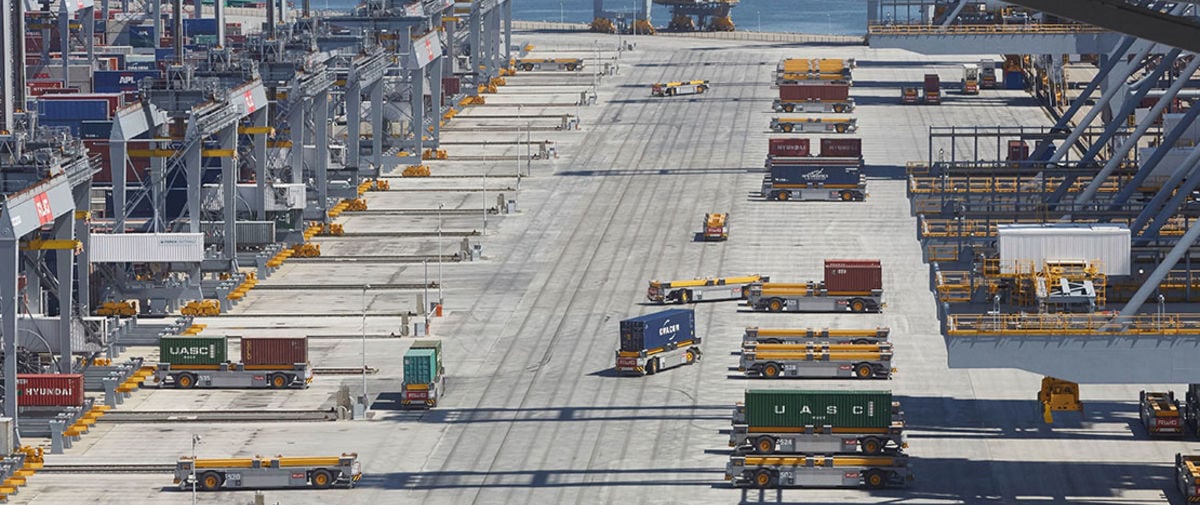The race is on to limit global warming to 1.5°C as set out in the Paris Agreement - the urgency of which was made clear in the latest Intergovernmental Panel on Climate Change (IPCC) report in March 2023. For businesses, this means consistently upping their game when it comes to emissions reductions – and this means understanding and tackling scope 3 emissions in particular.
“To put it very simply, scope 3 emissions are the emissions generated outside your business’ own boundaries,” explains Anniina Virta-Toikka, head of sustainability at Konecranes, a world-leading group of lifting businesses.
Sustainability is at the heart of Konecranes’ strategy and operations, and the company is proud to be among the forerunners in the industry showing the way. Virta-Toikka says: “There is only one planet, and we want to do business so that it fits the boundaries of this planet and preserves it for our children.”
“We committed to the ambitious, globally recognized Science-Based Targets (SBTi) in 2019 and our targets, which also include value chain or scope 3 emissions, were validated in 2022 by SBTi. Since then, the number of companies doing the same has quadrupled. We are happy to see this, it’s a promising direction.”

So why do we need to speak about scope 3 emissions?
Scope 1 and 2 emissions cover a company’s facilities and vehicles, plus electricity, steam, heating and cooling purchased for use by the business. Scope 3 is far greater in size and more complex, tackling emissions in the value chain. While the volume of emissions can be daunting, it also means that there can be big wins to help you reach your sustainability targets.
“Cutting your scope 1 and 2 emissions is important. But with Konecranes, for example, 99% of our total emissions come from scope 3,” explains Virta-Toikka.
Indeed, with scope 3 topping at least 70% of all emissions for almost any given company, it is clear that in order to meet ambitious climate targets, this is an area for businesses to focus on in addition to their scope 1 and 2 emissions.
Virta-Toikka says the key to getting started with addressing scope 3 emissions is to carry out very detailed calculations about the emissions, which involves generating a lot of data – for example with the help of your suppliers – in addition to collecting all the available, existing data.
She said: “There needs to be a really good understanding of where the emissions are coming from – and then you tackle the biggest categories first.”
While scope 3 emissions are complex, there are helpful Greenhouse Gas Protocol tools that make taking the first step much easier, starting with evaluation and then moving on to actual calculations.
“From the 15 scope 3 categories, the two major ones for Konecranes are the use of sold products, and purchased goods and services such as steel.
“The use of our diesel-powered equipment creates one of the biggest sources of scope 3 emissions for us. So, it was really clear for Konecranes that we need to expand our electrified offering. This is what we are currently focusing on.
“While focusing on the two biggest categories, we do of course also continue to cut our emissions in other scope 3 categories too, such as business travel and capital investments.”
Partnerships and collaboration: the way to reducing carbon footprint
Given scope 3 emissions come from outside your own business, the key to successful climate action requires a partnership approach – and the more there are businesses committed to cutting their emissions, the easier it is to find partners to help them reach their sustainability targets.
For example, Konecranes’ efforts to cut scope 3 emissions are helping clients such as Long Beach Container Terminal (LBCT) in California. LBCT has become the first fully automated container terminal in North America, running a large fleet of Konecranes’ electric Gottwald automated guided vehicles (AGVs) at the heart of its operations, and the world’s largest battery exchange to service them.
According to CEO Anthony Otto, LBCT is now the “the cleanest terminal on the planet”, having cut 90% of its scope 1 and 2 emissions. Investing in Konecranes’ electric products has helped them achieve this.
Otto said: “Konecranes are an important part of our design, moving from a conventional diesel-based model to a fully automated, electric model.
“We have shown that as a container terminal you can bring your emissions right down and be twice as efficient. Now others want to follow our blueprint, which is a great step forward in decarbonizing container terminal operations and great news for our planet.
“We are also making significant moves on scope 3 emissions, for example with 100% of ships coming to our terminal connecting to shore power, cutting the single greatest source of emissions in our industry.”
Otto also points out that using terminals such as LBCT allows shipping operators to cut their respective scope 3 emissions – a sustainability win-win showing climate partnership work in action.
It is this kind of snowball effect and co-operation that Virta-Toikka says is key as we aim for the 1.5°C pathway.
“Being more sustainable is clearly important for our planet,” she says, “But by being more sustainable in our operations and offering products and solutions that have been made and designed with circularity and decarbonization in mind, we are also helping our clients cut their emissions – the benefits are exponential.
“And it’s a two-way street: we also depend on our customers and suppliers to become more sustainable to help us meet our targets as well. It’s great to see more and more companies setting their own science-based targets, and we hope that we can encourage this even further, leading by example.”
Video

